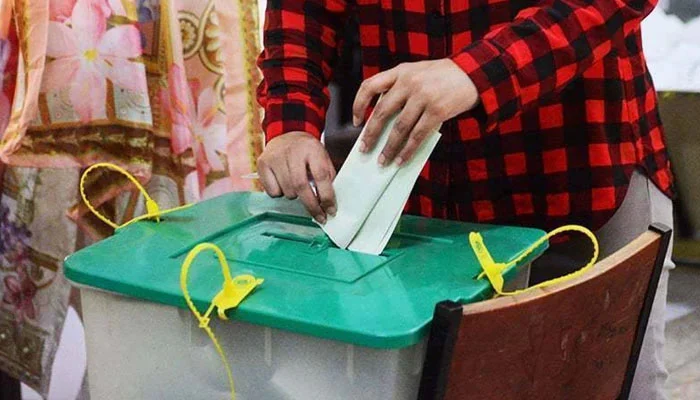Every Pakistani has, at some point, voiced their displeasure with the negative perception of their nation. Millions of Pakistanis are employed globally and are well-known for their diligence and productivity.
Pakistanis living abroad are especially sensitive to criticism of anything related to their country and become enraged when it is depicted in foreign media as “dangerous,” “dysfunctional,” or “unstable.”
They frequently argue that since they, their friends, and their family are all good people, the negative perception of Pakistan must only stem from the evil intentions of foreign powers or the unethical actions of Pakistani officials they detest. However, Pakistan faces more than just image issues. It is a hard reality as well.
How can we ask the outside world to overlook upsetting incidents that define the nation’s past and present? After all, the main focus of media reporting and historical narratives is rarely the kindness, hospitality, or religiosity of people from a particular nation. It is about war and peace, social and economic indicators, and the rulers’ exercise of power both inside and beyond the nation. Rejecting critical analysis as “anti-state” or “foreign-inspired” closes the possibility of changing directions.
For years, foreign-based doctors, engineers, bankers, taxi drivers, and industrial workers have been given a story about how their contributions to Pakistan’s grandeur have been undermined by the missteps of one or more politicians.
Few people have therefore been able to comprehend that Pakistan’s issues and bad reputation are the result of many mistakes made over a long period of time. It has nothing to do with politician A or politician B; rather, it has to do with the lack of a working political system, a culture of intolerance, and the incapacity to put economic advancement ahead of interpersonal strife.
People are blinded by partisan politics to problems with profound roots. When Mohtarma Benazir Bhutto, Asif Ali Zardari, Yusuf Raza Gilani, and Nawaz Sharif were found guilty by Pakistani courts, foreign Pakistanis cheered, according to their party affiliations. It is the disappointment of those who are in favor of the Pakistan Tehreek-e-Insaf (PTI) that cricket legend Imran Khan has now been found guilty and sentenced in front of a general election.
Regretfully, a country’s prime leader and foreign minister serve as their public face to the outside world. Regardless of the party to which they belong, the nation appears awful when they are charged with a felony.
It can be challenging at times to convince people to focus on problems and their solutions rather than on individuals and who is at fault. It should be uncommon for national leaders to be prosecuted, found guilty, and sentenced. The public conversation should not be limited to the victimization of X or Y; rather, it should address the process’ flaws if nearly every person who aspires to high office must go through it year after year.
The two most important components of a functional political system—compromise and devotion to the rule of law—are absent from Pakistan’s political structure. Along with the existence of Jihadi militants, a major contributing element to Pakistan’s negative worldwide image is the ongoing political turmoil and its aftermath. The negative perception of Pakistan also stems from the socioeconomic conditions we face.
Although Pakistan has made significant progress since its founding in 1947, it still trails behind its contemporaries in many areas. It is not just a matter of perception; this is a painful fact that must be faced. For example, Pakistan’s literacy rate increased from 11% in 1947 to 58% in 2023. Nonetheless, within the same time frame, India’s literacy rate increased from 12% to 76.3%.
It is not appropriate to attribute Pakistan’s relatively lower success in spreading literacy to party politics or to the purported corruption of a certain group of leaders that one finds objectionable. Pakistanis should face the fact that, unlike, say, obtaining nuclear weapons, education has not been their national priority despite their pride in their country. The fiscal allocation, curriculum selection, and poor policy priorities are the root causes of Pakistan’s educational issues.
Pakistan ranks 46th in terms of nominal GDP and just 24th in terms of PPP GDP, despite having the seventh largest army and fifth largest population in the world.
After gaining independence, Pakistan did not include funding for literacy in its national budget for nearly 15 years.Pakistan’s literacy rate actually decreased, albeit only little, between 1947 and 1957. Official investigations blamed “unstable administrative and organisational arrangements” for the disaster. Pakistan’s literacy rate is currently higher than that of just 15 other nations. Pakistan’s technology base has declined due to low literacy and insufficient education expenditure, which is impeding economic modernization.
Pakistan’s low literacy rate is not a result of poverty; rather, lower literacy rates contribute to the nation’s subpar economic performance. 24 of the 43 nations that are poorer than Pakistan in terms of GDP per capita also send more of their children to primary education than does Pakistan.However, neither politicians nor the media frequently address these and other painful realities as Pakistan prepares for its twelfth general election. Pakistanis are too preoccupied to care about anything other than their favored leader fixing the country’s image and image problems.







